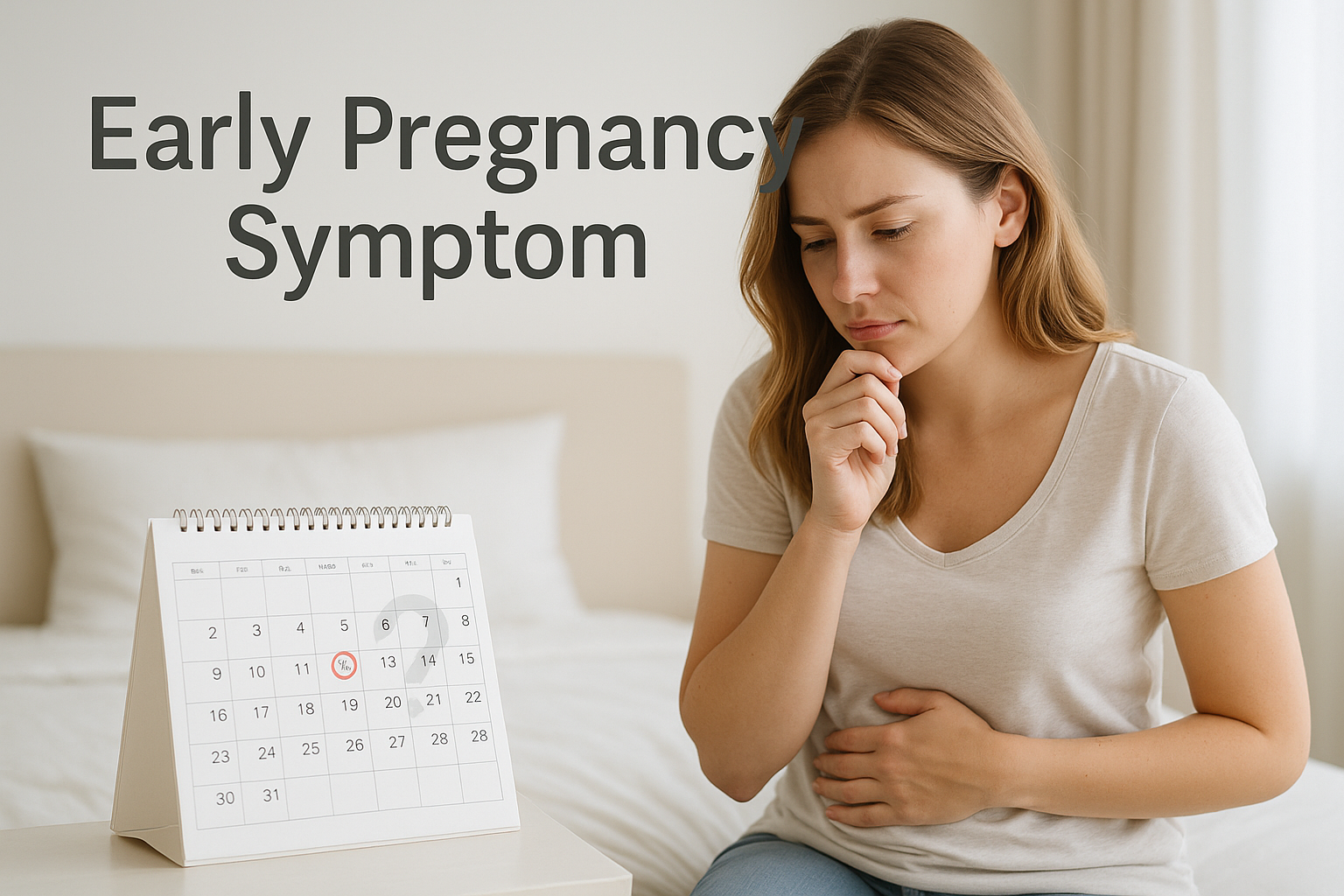Physical Address
304 North Cardinal St.
Dorchester Center, MA 02124
Physical Address
304 North Cardinal St.
Dorchester Center, MA 02124


A symptom checklist can bring you clarity, confidence, and peace of mind as you track what your body is telling you. Whether you’re trying to conceive, suspect you might be pregnant, or just want to understand your cycle, this blog will guide you—step by step.
Also read “When to Take a Pregnancy Test Based on Symptoms“
Pregnancy begins when a sperm fertilizes an egg (conception) and the fertilized egg implants in the uterus.
Symptoms of early pregnancy are triggered by rising levels of hormones like hCG and progesterone. Most people begin to notice changes about 1-2 weeks after conception—sometimes before a missed period.
For some, symptoms appear as soon as week 1 of pregnancy or just a few days after implantation. For others, changes may be subtle or delayed.
A symptom checklist helps you:
Tracking your symptoms at home is especially helpful if you want to document early signs before a positive pregnancy test.
Here’s your comprehensive checklist to track pregnancy signs and symptoms at home.
Tip: Print this out, save it to your phone, or use it as a journaling template.
Want a handy printable? Download the Free Pregnancy Symptom Tracker PDF
Pro Tip: Every woman’s journey is unique! Some notice many symptoms, others almost none. Both are normal.
Let’s dive deeper into what each symptom means, and how to tell if it could signal pregnancy.
Usually the most reliable early sign, especially with regular cycles.
Occurs in some women 6-12 days after conception; lighter and shorter than a normal period.
Can feel similar to PMS, but may be milder or different in location.
Tender, sore, or fuller-feeling breasts; sometimes darkening of the nipples.
Sudden or extreme tiredness—thanks to rising progesterone and metabolic changes.
Can occur any time of day; often starts around week 5–6 but can appear sooner for some.
Sudden dislike for certain foods or strong new cravings—hormones are the culprit!
You might notice scents (good or bad) are much stronger than usual.
Caused by increased blood flow and kidney activity even before the uterus expands.
Digestive changes are common as hormones slow the GI tract.
Roller-coaster emotions can result from hormone surges.
Sometimes triggered by hormonal changes, dehydration, or low blood sugar.
Increased blood flow can make you feel a bit warmer than usual.
Lower blood pressure and increased blood volume may cause this.
Some experience back pain or pelvic pressure as the uterus changes.
Hormones can even affect sleep and dream patterns!
Thin, milky discharge can be one of the earliest pregnancy signs.
Some women notice a strange metallic taste—likely due to hormonal changes.
If you track your temp, a persistent rise after ovulation can signal pregnancy.
Remember:
It’s one of the most common questions:
“How do I know if these are PMS or pregnancy symptoms?”
| Symptom | PMS | Pregnancy |
|---|---|---|
| Cramps | Yes | Yes (may be milder) |
| Breast Tenderness | Yes | Yes (may last longer) |
| Mood Swings | Yes | Yes |
| Fatigue | Sometimes | Often more pronounced |
| Nausea | Rare | More likely in pregnancy |
| Food Cravings | Yes | Yes (stronger, more aversions) |
| Missed Period | No | Yes |
Key difference: A missed period + multiple symptoms = much more likely to be pregnancy!
Related read: When to Take a Pregnancy Test Based on Symptoms
Tip: Bring your symptom tracker or checklist to your appointment for a more personalized conversation.
Ready for a printable, easy-to-use checklist?
[Download the Early Pregnancy Symptom Tracker PDF here]
Q: Do I need all these symptoms to be pregnant?
A: No! Every pregnancy is unique. Some people have many symptoms, others have very few.
Q: How soon do early symptoms start?
A: Some women notice changes as early as 1 week after conception, others not until after a missed period.
Q: Can I be pregnant if I have no symptoms?
A: Yes. Lack of symptoms does not mean you’re not pregnant—especially early on.
Q: What if I have symptoms but my test is negative?
A: Wait a few days and test again, or speak to your healthcare provider.
Q: What’s the difference between PMS and early pregnancy symptoms?
A: Many symptoms overlap, but pregnancy often brings a missed period, more pronounced fatigue, and nausea.
Tracking your symptoms with a checklist is a practical, empowering step—especially during the confusing first weeks of early pregnancy.
Listen to your body, use your tracker, and seek professional advice if you’re ever unsure.
Read more from Goal for Wellness
Download the free pregnancy symptom tracker.
[…] YES?You might be experiencing early pregnancy symptoms! Check out our Early Pregnancy Symptom Checklist and consider taking a home pregnancy test for […]
[…] Early Pregnancy Symptom Checklist: Track Your Signs, Understand Your Body, and Take Control […]
This is my first time pay a quick visit at here and i am really happy to read everthing at one place